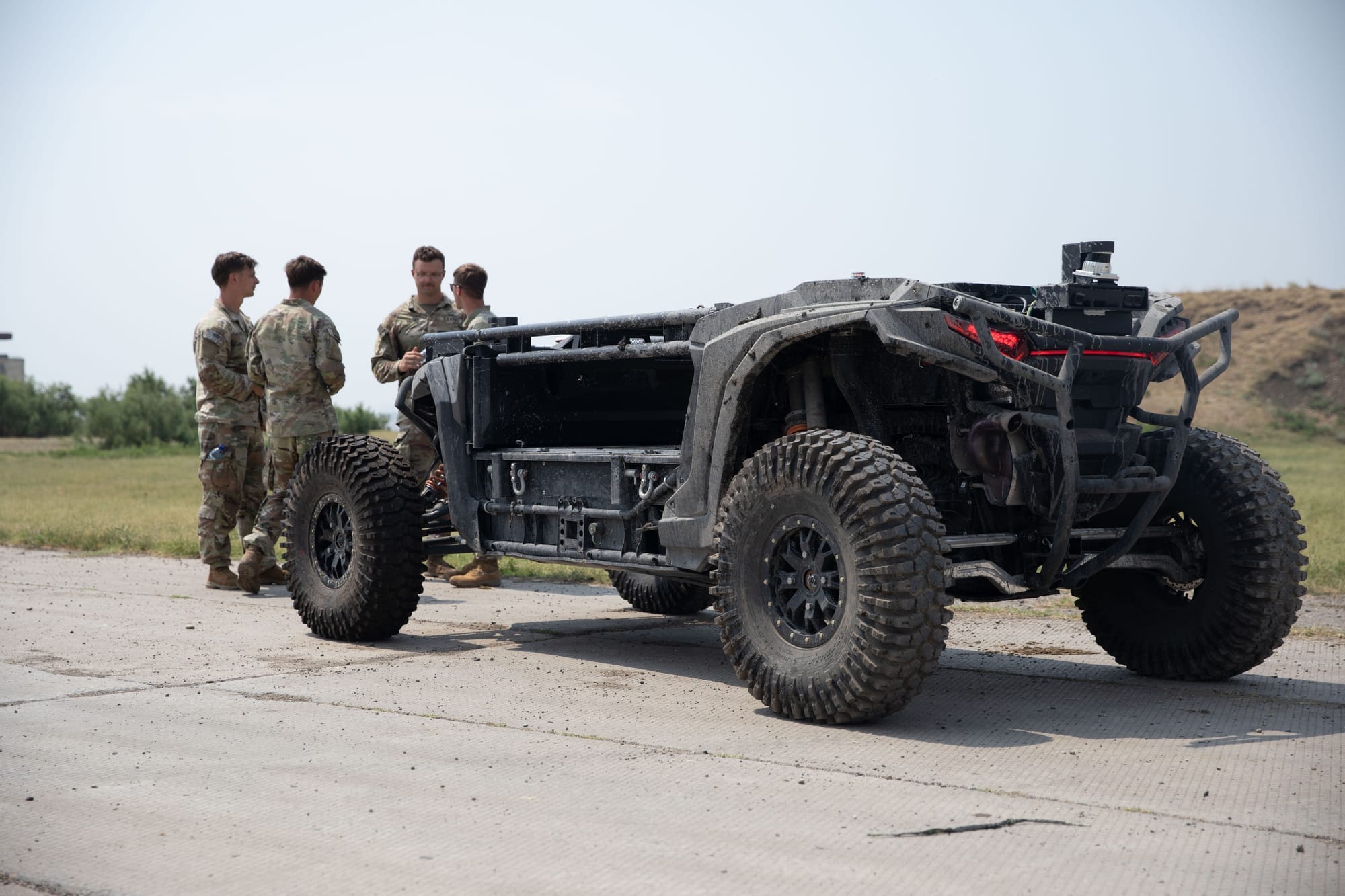The U.S. Army Is Testing AI Controlled Ground Drones Near a Border with Russia
The U.S. Army tested a fully AI controlled ground vehicle in Vaziani, Georgiaabout 100 miles from the Russian borderlast month as part of a training exercise. In military-published footage, an all wheel, off-road vehicle about the size of a car called ULTRA navigated the European terrain with ease. The training exercise had the ULTRA resupplying soldiers, but both the military and the machines creator think it could do much more.The Pentagon has invested in drones and AI for decades, long claiming that both are the future of war. The appearance of the ULTRA signals a time when AI controlled robots will populate the battlefields of the near future.ULTRA was built to be modular and mission-adaptable from the start, Chris Merz, an employee of Overland AI, the company behind ULTRA said according to an Army press release. We are actively developing variants that support casualty evacuation, counter-unmanned aircraft systems, and terrain shaping operations.ULTRA runs on Overland AIs proprietary OverDrive software, a system thats designed to give AI full control over ground vehicles on the battlefield. Overland AI did not return 404 Medias request for comment, but its website claims it can retrofit OverDrive onto traditional vehicles and its YouTube page has a video claiming to show the AI piloting a Ripsaw M5 tank.Overland AI is a Seattle based company that started in 2022. Its gained a lot of buzz in the last few years as a pioneer of AI software meant to control unmanned ground vehicles (UGVs). Jon Fink, Overland AIs CTO, explained how its software worked during a presentation at a defense tech showcase earlier this year.During the demo, Fink showed footage of a field test where an ATV navigated hazardous terrain with minimal input from a human. Fink said the companys OverDrive software is purpose built for the warfighter. Its built in order to enable the operator so it can remotely task a system so it can autonomously move through an environment without reliance on detailed maps or communication back with that operator.The big challenge of AI systems like this is that they need to be able to navigate the terrain on their own without looking at a map. GPS is often jammed or unavailable on the battlefield. So a robot will need to use cameras and other sensors to make decisions about how to move through a warzone in real time. In the video, the operator drops a few waypoints on a map of the area and clicks a button to launch the ATV. Note while were specifying all these tasks, Im not like zooming in, looking very close at detailed information that I might have from a satellite, because I cant necessarily trust that, Fink said. Satellite imagery can become outdated quickly on a chaotic battlefield.Im really giving the system just a coarse idea of what I need it to do to accomplish my mission.The U.S. Armys test last month has been a long time coming. This isnt new, Samuel Bendett, a drone expert at the Center for Strategic and International Studies, told 404 Media. This has been in development for many, many years [] this is at least a decades worth of research, development, testing, and evaluation of different levels of autonomy with different technologies.Russia, China, and the United States are all working on AI controlled ground vehicles. Drones require an operator which means a human being needs to maintain contact with a device over vast distances. Thats easier to do when the machine is a robot flying through the sky, but ground vehicles have to contend with signal-blocking debris and are easier targets for ground troops.Communication between the UGV operator and the operator can be jammed if its radio, the communication can be severed if its done via cable, communication may be endangered if its an aerial drone thats trying to provide signal strength and overwatch capabilities, Bendett said. Operators have to be in relative proximity to their UGVs, and that, of course, somewhat negates the point of using UGVs instead of people. If people are close to their UGV, they can be discovered and killed.AI answers a lot of these problems. If an operator can give a set of simple instructions to a machine and let it operate independently, then it need not be in constant contact. In his presentation earlier this year, Fink noted that the AI controlled ATV adjusted its speed as it navigated terrain, all on its own. We havent set any sort of speed limits or specifications to the system when we tasked it, we basically just told it: Go to these general locations and its taking care of all of the decisions as it needs to, he said.There are major concerns about warfighter machines making decisions by themselves. UN Secretary-General Antnio Guterres has called for a ban on autonomous weapon systems, calling them morally repugnant. In Gaza, Israel is using AI models from OpenAI and Microsoft to make targeting decisions and Israeli intelligence officers have told reporters that information provided by the AIs were treated as if it were a human decision.Right now, Overland AIs OverDrive AI stack is just for helping a ground vehicle navigate, and Bendett said its ahead of the pack. The Holy Grail of autonomy is translating that intuitive human experience into a UGV that will be able to navigate, on its own, through rough terrain, mixed terrain, uncertain terrain, which is what were seeing with Overland UGVs, he said.What could this thing be used for? The number one goal for these kinds of UGVs is logistics and supplies, Bendett said. Medical evacuation is becoming a growing concern and UGVs are also used for that.It, of course, wont stop there. UGVs used in combat can be mounted with all manners of weapons, Bendett said.The U.S. Army did not respond to 404 Medias request for comment.



